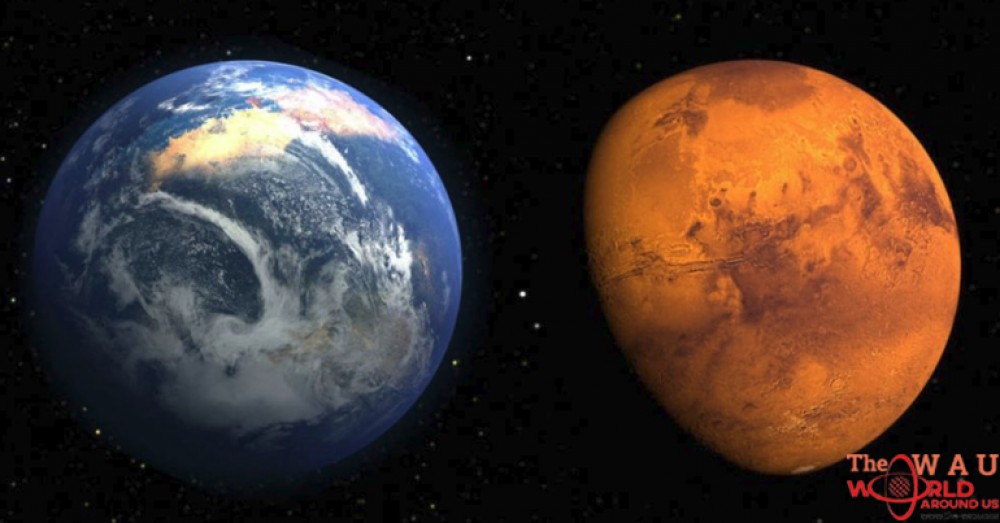The two planets will be just 35.8 million miles (57.6 million kilometers) apart on Tuesday. Los Angeles' Griffith Observatory will provide a live online view of Mars early Tuesday.
Today, the red planet is making its closest approach to Earth in 15 years.
The two planets will be just 35.8 million miles (57.6 million kilometers) apart on Tuesday. Mars is already brighter than usual and will shine even more — and appear bigger. Astronomers expect good viewing through early August.
A massive dust storm presently engulfing Mars, however, is obscuring surface details normally visible through telescopes. The Martian atmosphere is so full of dust that NASA's Opportunity rover can't recharge — not enough sunlight can reach its solar panels — and so it's been silent since June 10. Flight controllers don't expect to hear from 14-year-old Opportunity until the storm subsides, and maybe not even then.
The good news about all the Martian dust is that it reflects sunlight, which makes for an even brighter red planet, said Widener University astronomer Harry Augensen.
"It's magnificent. It's as bright as an airplane landing light," Augensen said. "Not quite as bright as Venus, but still because of the reddish, orange-ish-red color, you really can't miss it in the sky."
In 2003, Mars and Earth were the closest in nearly 60,000 years — 34.6 million miles (55.7 million kilometers). NASA said that won't happen again until 2287. The next close approach, meanwhile, in 2020, will be 38.6 million miles (62 million kilometers), according to NASA.
Observatories across the US are hosting Mars-viewing events. Los Angeles' Griffith Observatory will provide a live online view of Mars early Tuesday.
Share This Post















